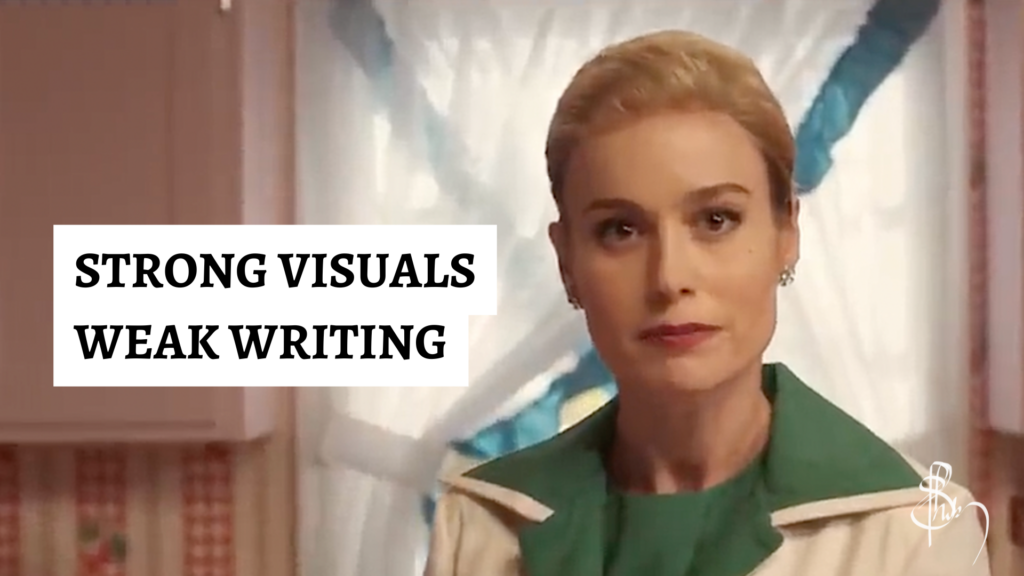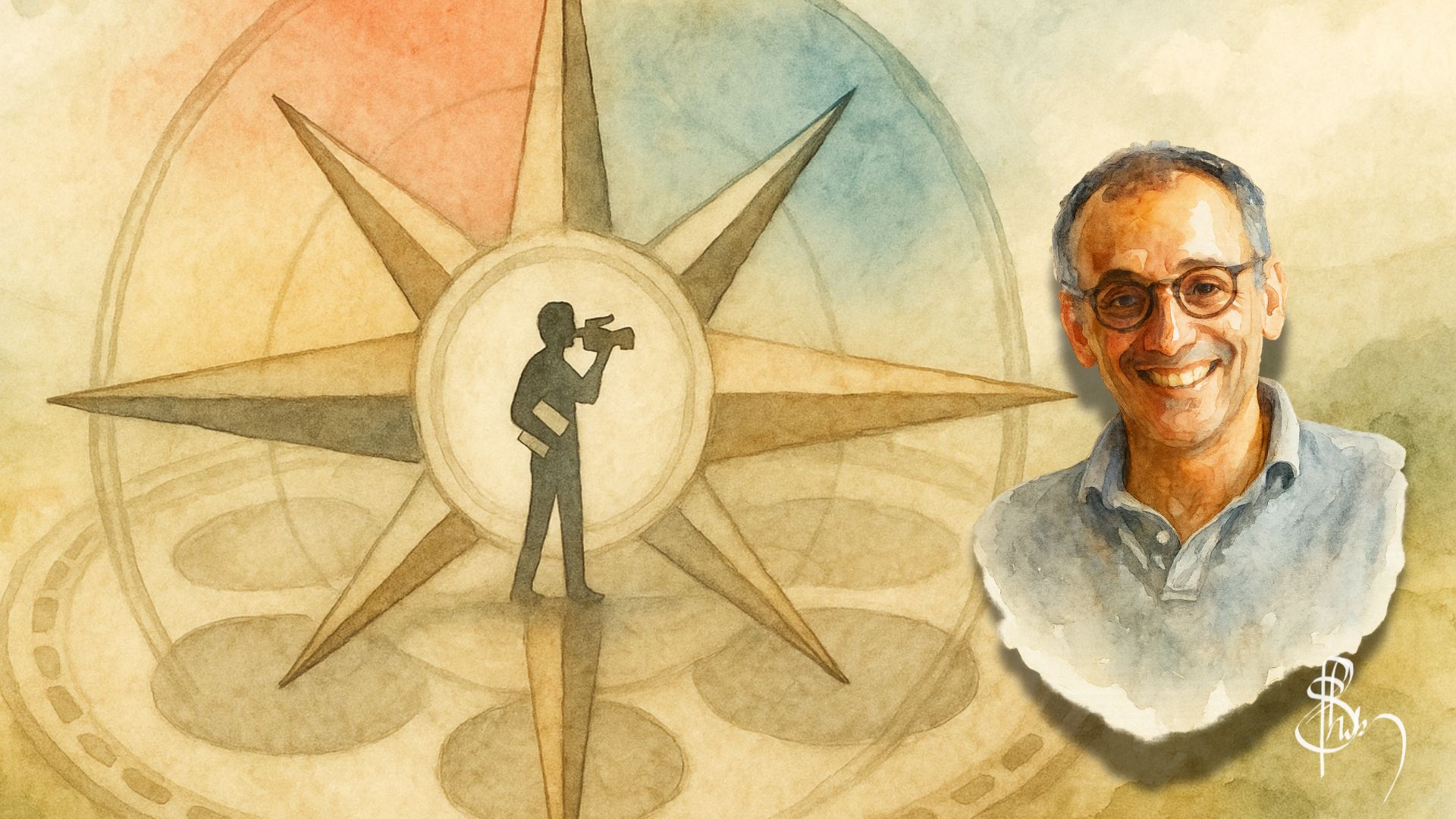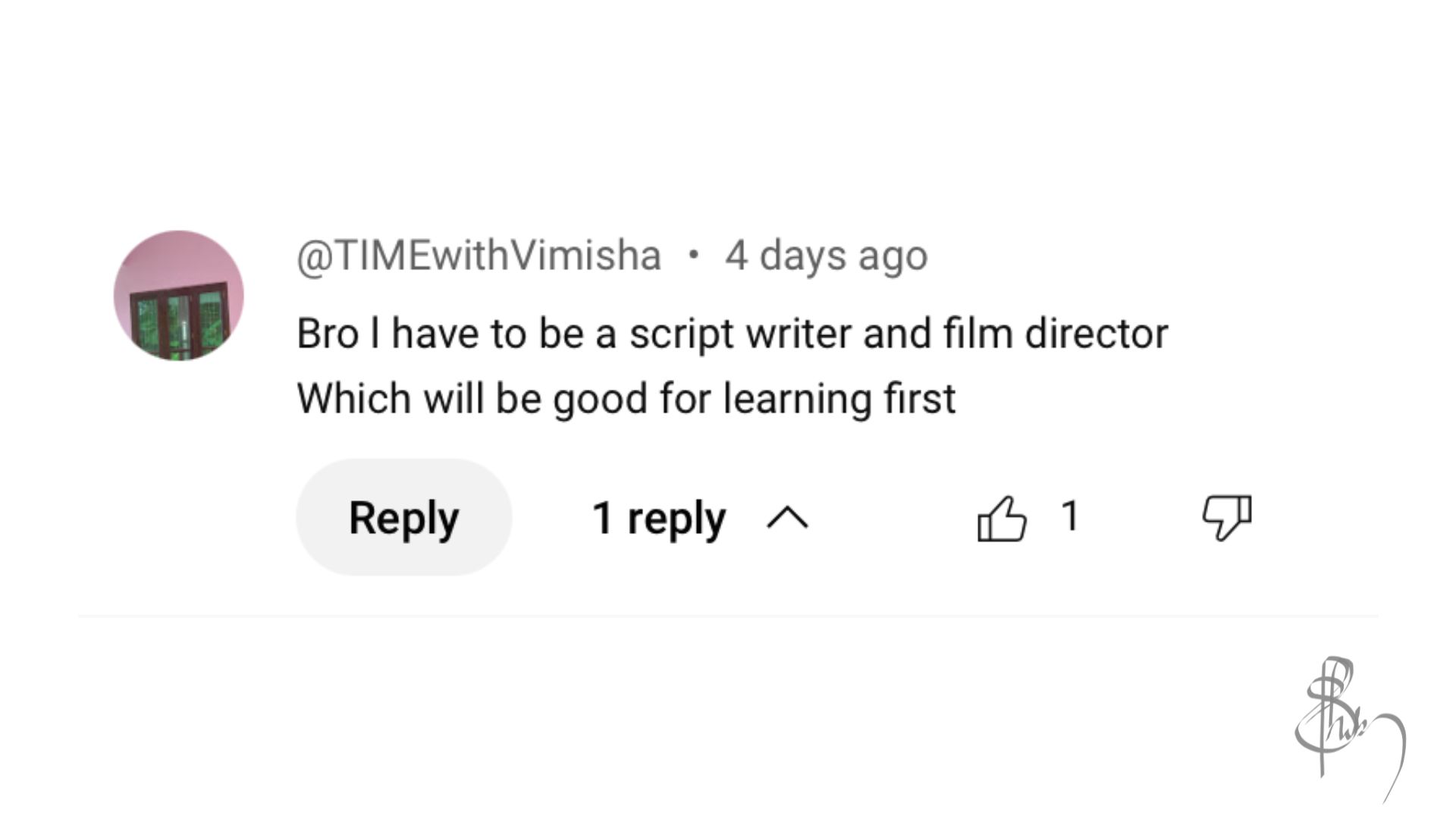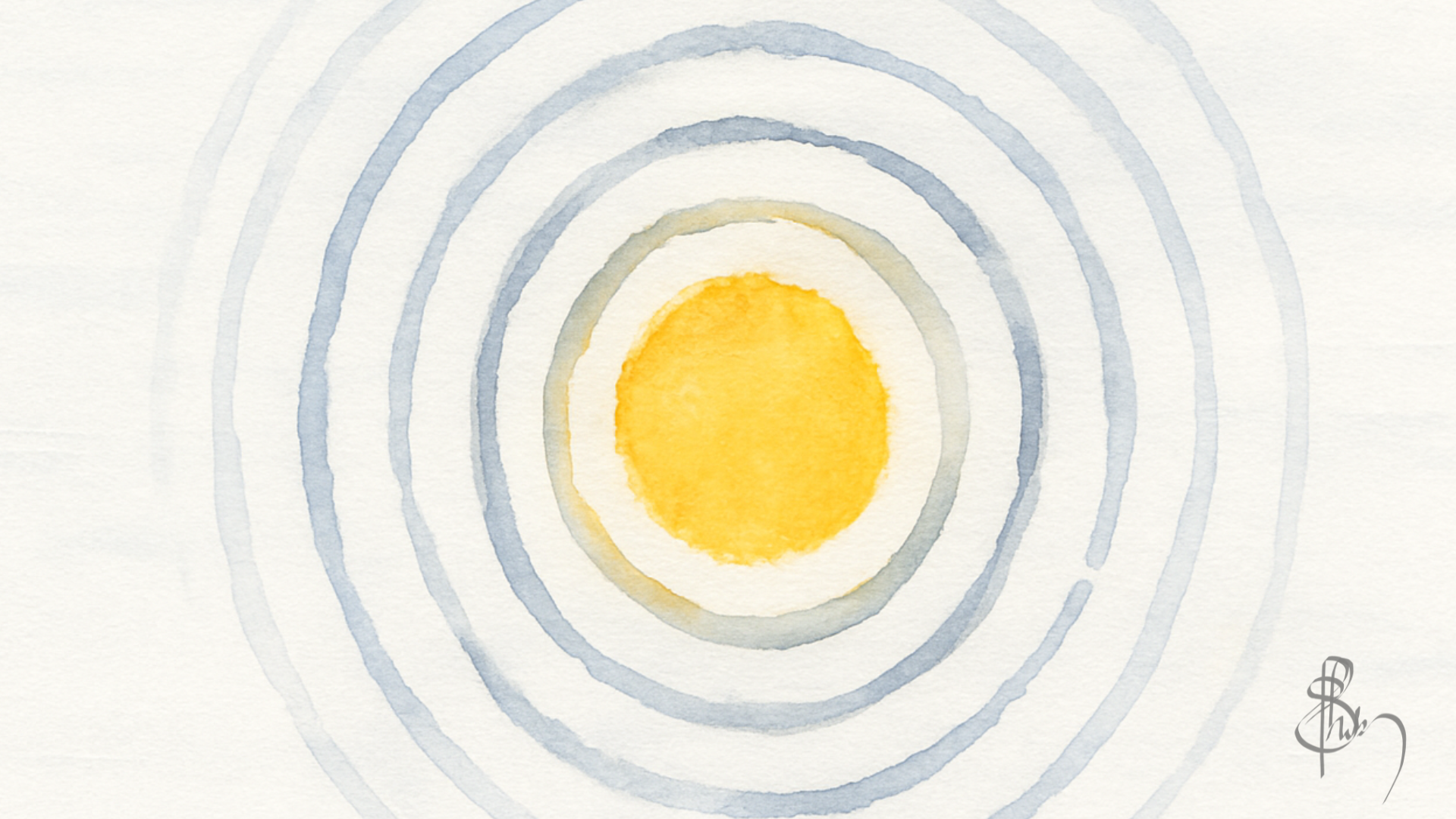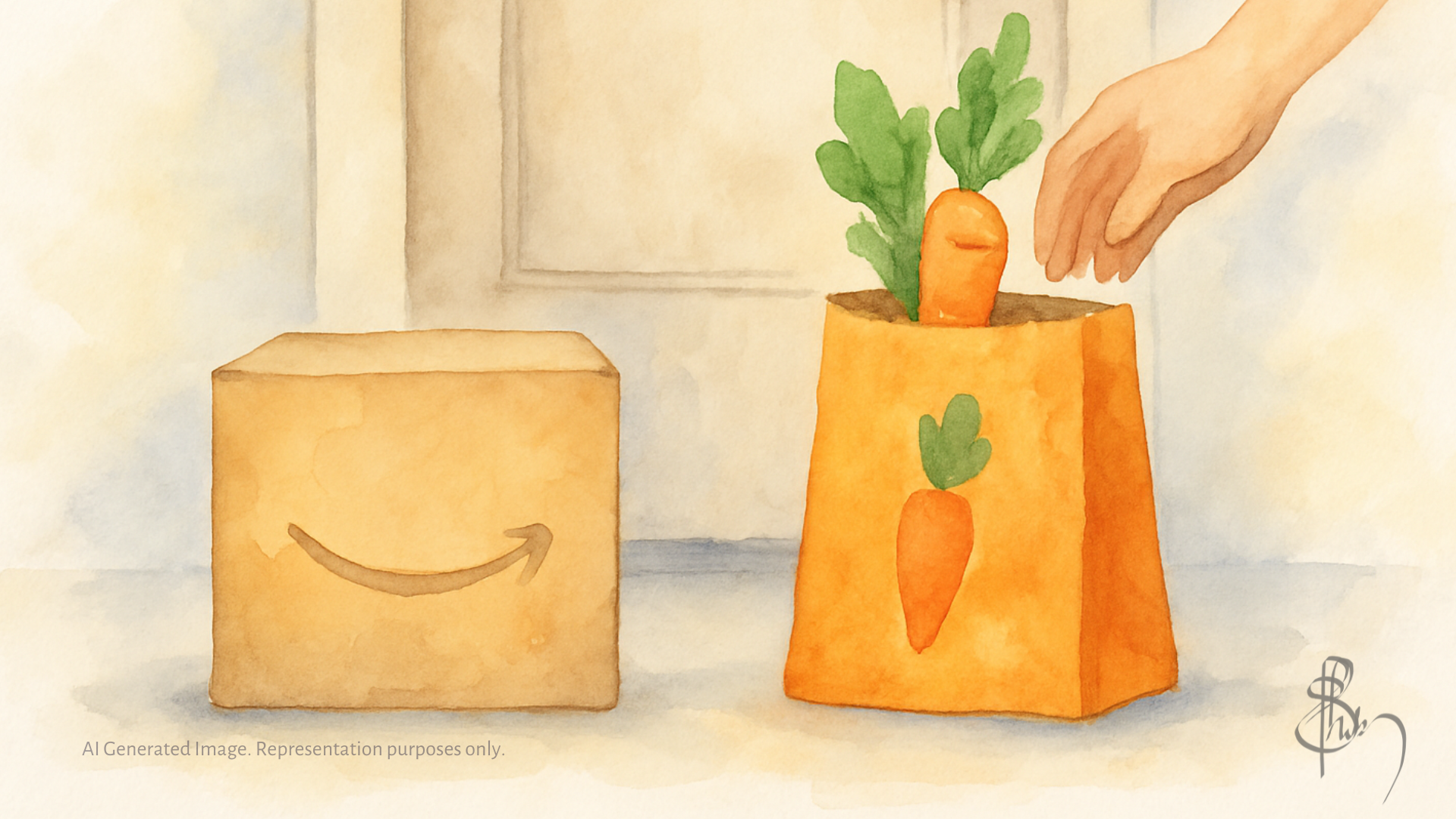TL;DR:
Lessons in Chemistry review (no spoilers): Beautiful visuals & apt performances, but patchy writing, dropped arcs & a fairytale ending.
Okay, not great.
My sister had recommended Lessons in Chemistry. I was myself in the process of writing a period piece. Thought I might take a lesson or two from the series. Albeit my story taking place not in the 1950s or in the US. I binge-watched the entire series. Following is my Lessons in Chemistry review.
Warning: Multiple spoilers ahead across the entire series.
Performances: Apt but Uneven
Brie Larson wasn’t riveting to sit and watch through. But her character, Elizabeth Zott, isn’t one. It’s a seriously stunted character, holding onto seriousness as a mask. In that sense, I guess Brie Larson’s acting was apt.
There is a subtlety that Brie Larson brought to the screen. For example, there was this moment where her character, Elizabeth Zott, is holding up a rally poster in her cookery show, risking her career, and I could see her shivering through the shaking held-up flier. Standing up even when afraid. That was beautiful to watch.
In fact, there are many such subtle performances and moments that made me binge-watch it. In one of Elizabeth’s sit-in TV shows, she identified a woman’s hidden dream of becoming a doctor. Elizabeth called her a surgeon on the spot, giving that minor character confidence she direly needed. That too worked well for me.
Speaking about shivering, when Elizabeth’s dog, Six Thirty, stood on the pavement shivering, having just seen Elizabeth’s partner get run over, was beautifully done.
Elizabeth’s partner, Calvin Evans, the other lead character, I felt, was aptly played by the actor Lewis Pullman. I don’t believe I have seen any of his other works, other than perhaps the minor character in Top Gun: Maverick (2022).
Beautiful Cinematography and Sets
The cinematography and set design stood out. The colours, the frames, the sets, all of it was nice, beautiful, and well put together. Visually, the series delivered a strong atmosphere that was enjoyable to watch.
Patchy Writing and Disjointed Structure
The writing is where I felt the most dissonance. It often came across like patchwork.
For example, in the first episode, they hinted at a possible history of sexual assault in Elizabeth’s past. In the second episode, they showed what happened. Through her reaction to closed doors and being alone with men in a room, an action repeated three or four times over the course of just the first two episodes, the idea of her trauma was planted deeply in my mind. But from the third episode onward, this idea was dropped completely. There was no sense of her recovery or resolution. It was just gone.
Another example is a priest character, Reverend Wakely, who is introduced only towards the last couple of episodes. But then it is suddenly revealed that he was an influential figure in Calvin’s life, even his decision to talk to Elizabeth in the first place. This backstory felt stuffed into one episode, rather than being developed naturally.
Confusing Multiple Points of View
It could be argued that the story of Reverend Wakely was revealed only later because Elizabeth herself didn’t know about Reverend Wakely till that point. But then the problem is that the story is not entirely told through Elizabeth’s lone point of view. It is told by multiple people. Forget people. There is even an episode from the dog, Six Thirty’s point of view, including his backstory.
Not only does the story jump between points of view, but it does so across multiple timelines. There is the present where Elizabeth is a TV star (at least what I think is the present because that is where the series started), the past when she is trying to be recognised as a chemist, flashbacks to some years back during her assault, and way back to her childhood later in the series.
Not to mention the story from Elizabeth’s daughter’s storyline, hunting for Calvin’s history, and the story from Calvin’s point of view of the same incidents we saw previously from Elizabeth’s point of view.
These constant shifts made it feel disjointed. We were not on a ride following Elizabeth’s journey of discovery alone, but interjected with many side stories.
Side Stories That Felt Patched On
There’s also the political subplot about Black oppression and civil rights, led by her neighbour, Harriet Sloane, played by Aja Naomi King. It thematically connects to Elizabeth’s story in the ideas of oppression and suppression. The Sloane family also later becomes Elizabeth’s support system.
But the subplots didn’t feel organic. Elizabeth has no interest in it beyond trying to help her neighbour. If the flyover is built, against which Slaone is campaigning, it would destroy Elizabeth’s home as well. But Elizabeth didn’t feel bothered by it, at least from what I saw. Which is why, even though the moment I mentioned earlier about Elizabeth shivering, risking her career holding up a rally poster was well acted, it didn’t mean much. It felt disconnected.
Later, when Sloane loses the campaign trying to get votes to stop the primarily white local Government from destroying their Black neighbourhood, it felt empty. Not because of any bad performance by the actress, but it failed to connect to the story of Elizabeth I, for which I started watching the series. With whom I had spent so many episodes.
There was also Elizabeth’s journey of becoming a mother and not feeling like a loving and caring “mother” she is supposed to be. I can see why this would have resonated with my sister, who herself had just given birth to her first child. But this part of the story comes towards the middle of the series, and watching it, I felt confused as to what the story was about and where it was going. It could be that I, a man, cannot understand the pains of the opposite gender. Like the men in the maternity ward saying the hospital should put up thicker walls to stop the women’s labour screams. Perhaps another idea that the creators wanted to put across.
All these plethora of ideas and subplots feel patched on top of Elizabeth’s story. Like an attempt to speak about broader issues. But it doesn’t seem to flow naturally from the main character’s journey. I think Hidden Figures (2016) handled the juggling of multiple points of views, subplots and themes of overcoming suppression better.
A Fairytale Ending
The ending had a fairytale quality. It turns out Elizabeth’s partner, Calvin, was actually heir to a trust fund. His mother had been trying to reach him for years. And had been supporting boys’ homes and research grants. Which had unknowingly helped both Elizabeth and Calvin all along the way, from the very beginning of the story. This reveal felt a bit too convenient, too stuffed in.
It could be argued that that was what Calvin’s lesson was about: surprises, chances, the whole of life itself starting out as a chance, the variables. That was his thesis. Which is yet another idea the series is trying to put across.
In the climax, there was this one scene that I liked. When the rich trust fund fairy grandmother offers Elizabeth help to continue her research, I expected Elizabeth to reject it. That was her pattern so far in the series. Instead, she accepts. She saw help as a gift now. That change was a good moment, a closure.
The Small Arcs That Worked
Many of the plot points in the series were closed, even if sometimes in a patchy way. For example, the character I talked about earlier, who was afraid to even admit she wanted to be a doctor, later came back on Elizabeth’s cookery show again to say she had enrolled in medical school. That closure was powerful and satisfying. That part of the writing was good.
The problem was not the lack of ideas. But that there were far too many. And because of that, nothing lands.
Lessons in Chemistry Review Verdict: Okay, But Could Have Been Better
In the end, the series had beautiful visuals and some strong moments, but the main flaw was patchy, dissonant writing. Important arcs were introduced and dropped, subplots arrived too late, and some felt patched on.
While watching, I often found myself wanting to skip ahead many a time. Had it been an episode or two shorter, some subplots and ideas dropped, I believe it would have been a much better series.
Watching Lessons in Chemistry was okay overall, but it never reached its full potential.

